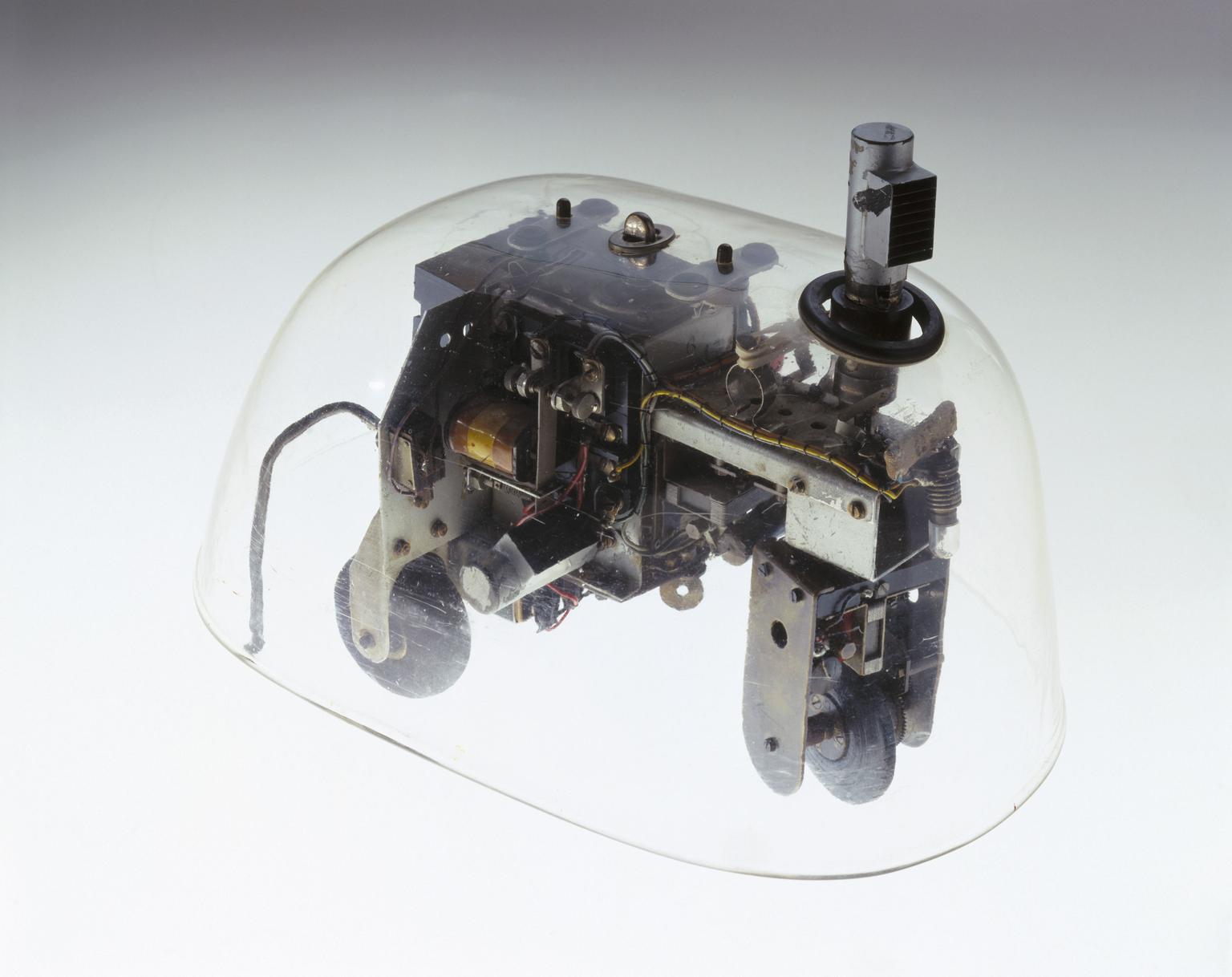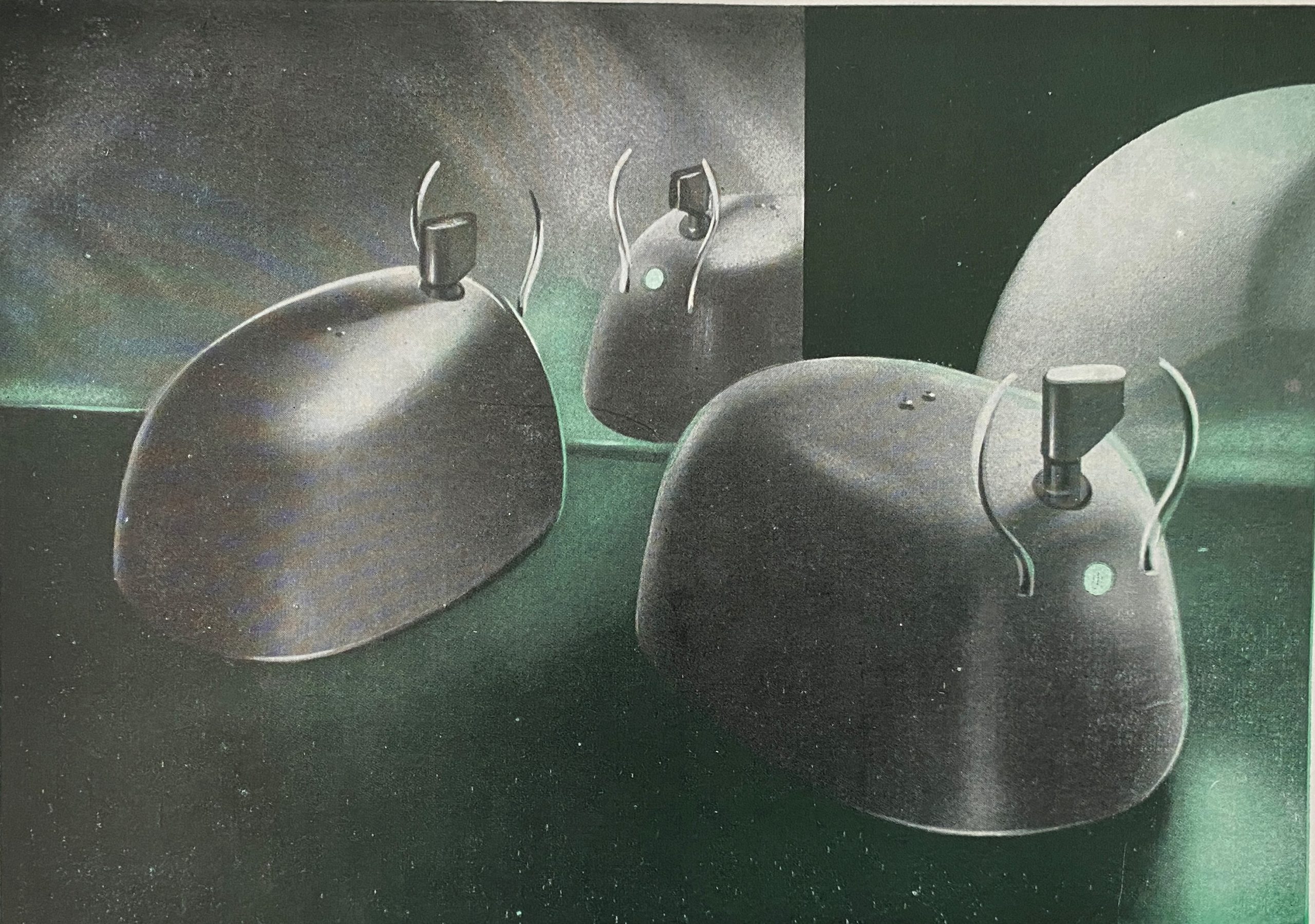Seventy years ago, in August 1951, Alan Turing visited the Science Museum in South Kensington. Perhaps he had come here before, as a schoolboy, but this is the only visit that we know of for sure.
He set out, with Cambridge friends, to the Festival of Britain on the South Bank, but the Science Museum was their first stop was for it housed the festival’s display of science and technology.
They were particularly amused by the cybernetic ‘tortoises’ developed by the brain researcher Grey Walter.

There were two, called Elsie and Elmer, and these bumbling, ‘proto-robots’ were fitted with lights and photoreceptors, so they appeared to dance together clumsily when they caught sight of each other across their enclosure.
But they were rather unresponsive that day and Turing’s friend Robin Gandy joked that Elmer appeared to be suffering from general paralysis of the insane.
When they were on good form, they could show surprisingly lifelike behaviour. Each had just two ‘senses’ – attraction to light and repulsion on contact, but this generated quite complex and amusing behaviour – particularly when two were together since their lights attracted them to each other but when they bumped together they backed away, continually repeating the cycle of attraction and repulsion.
These tortoises were the source of much of Grey Walter’s fame and attracted immense media coverage.

They really were electronic arguments for a mechanistic view of intelligence and for Grey Walter’s view that wartime electronics had brought intelligent, cybernetic machines closer. The complexity of the brain, he argued, was ‘not so great’.
Although the machines might be made up merely of switches, batteries, motors and wires, so too, he implied, are we.
Grey Walter held a special place in propagandizing for artificial intelligence and the development of cybernetics in Britain.
Historian Rhodri Hayward has written: ‘in contrast to the cultured objectivity of British science … he cultivated a more swashbuckling image as an emotional adventurer [with] a heterogenous series of roles ranging from robotics pioneer, home guard explosives expert, wife-swapper, TV pundit, experimental drugs user [and] … champion of leucotomy and electro-convulsive therapy.’
Alan Turing would certainly have met Grey Walter through the Ratio Club – an extraordinary group of ‘boffins’ who had worked in defence electronics in the Second World War. In peacetime, they carried on with research into brain science, robotics and in modelling human actions.
All this was covered by the popular, new term ‘cybernetics’ and much of this thinking arose from the Second World War invention of radar-controlled anti-aircraft gunnery, where the combination of a radar set, a dedicated analogue computer and the gun battery, seemed to generate almost lifelike properties, mimicking creatures like us with a brain, vision and arms.
But Turing would have disagreed with Grey Walter’s assertion that the complexity of the brain was ‘not so great’.
On a wartime visit to the Bell telephone labs in the USA he had already discussed the emergence of computers with Claude Shannon, the pioneer of information theory. Surely these machines would soon become genuine ‘thinking machines’ – not just high-speed calculating engines?
He embarrassed his hosts there by proclaiming piercingly, over lunch, ‘I’m not interested in developing a powerful brain. All I’m after is just a mediocre brain – something like the president [of the Bell company]’.
By 1950 Turing had published his paper on the ‘imitation game’ – the ‘Turing Test’ – partly in response to the widespread view that machines would never be able to ‘think’.
And because defining thinking seemed so difficult, Turing suggested that the test should be based on behaviour and observation, so that if a human questioner cannot distinguish between the responses of a computer or a human, the machine must be deemed to be thinking too.
Turing had also developed a chess-playing program as a kind of gymnasium for programming. He saw the challenge ahead for artificial intelligence, both of machine design and of programming, but knew that these would be solved. By 1958, these ideas had become mainstream, and the National Physical Laboratory even hosted a conference with the title The Mechanisation of Thought Processes.
Alan Turing died, tragically, in 1954.
But, by then, Turing and this wider group had kickstarted new research departments for artificial intelligence, robotics and computer science throughout Britain.
Today, Grey Walter’s tortoise has a proud place in Making the Modern World – the Science Museum’s gallery of the greatest ‘firsts’ in technology and science.
This is just one of the many fascinating stories from Andrew Nahum’s new book, Paths of Fire, published by Reaktion Books in partnership with the Science Museum.